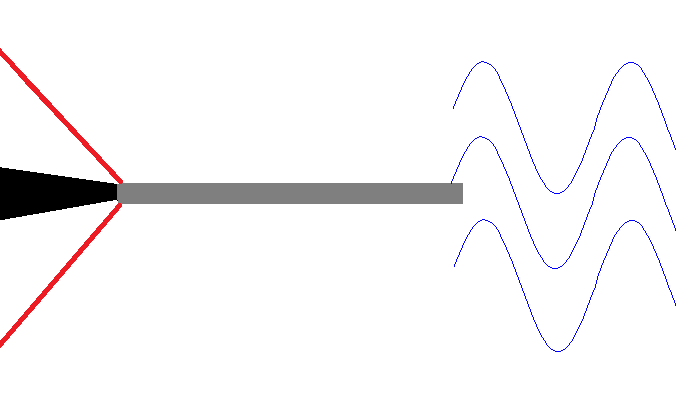I was doing a microwave experiment with the following set up: there is a Gunn diode which emmits microwave radiation and a receiver (both work with polarised light).

The strange thing is that when I put a metal plate along the line connecting the emmiter and the receiver, if the plate is perpendicular to the polarisation plane, no radiation is detected. Instead, it's deflected about 20° from both sides of the plate. However, if the plate is parallel to the polarisation plane, radiation is detected as expected.
One explanation might be that polarised light will "collide" with the laterals of the plate (and that could produce interference). But when the polarisation plane is parallel to the plate, light will past without noticing. Still, my professor had no idea what was happening.
Addendum 2013/10/26
It's important to note that I doesn't matter if it a metalic or wooden plate, so it's nothing related the Fresnel equations.
The effect is this:

The image is not precise at all.
The black zone is where no microwaves are detected. The red line is where the maximum is detected. The incident wave is blue.
Another possibility is that there is no diffraction at all, because the plate blocks the incident waves (like if you shelter on a side of a wall when someone's shooting at you).
